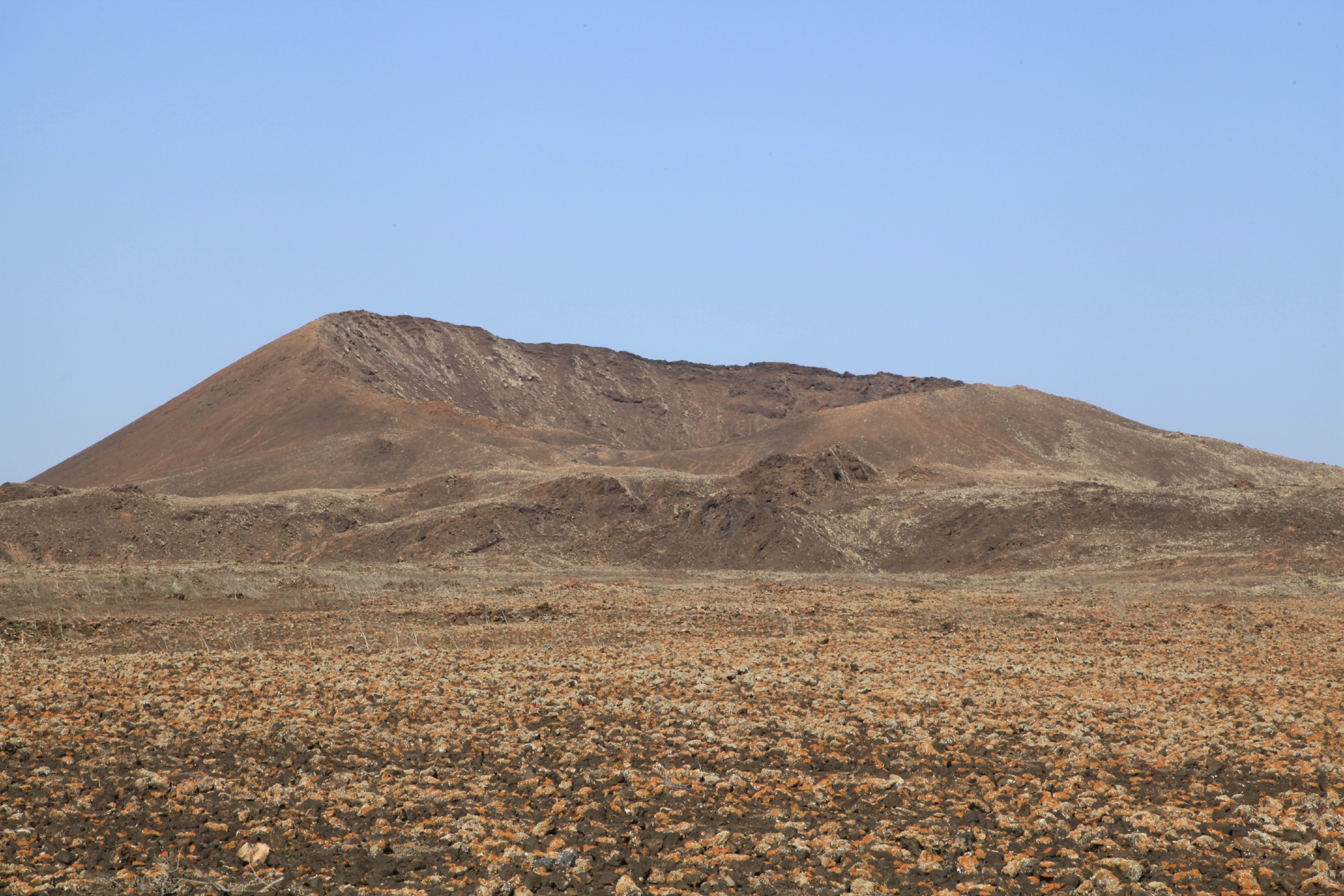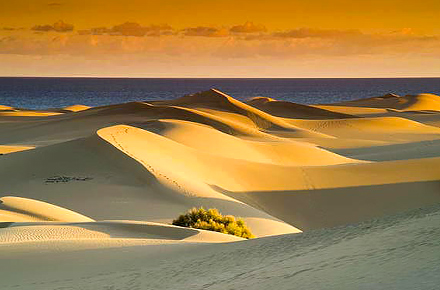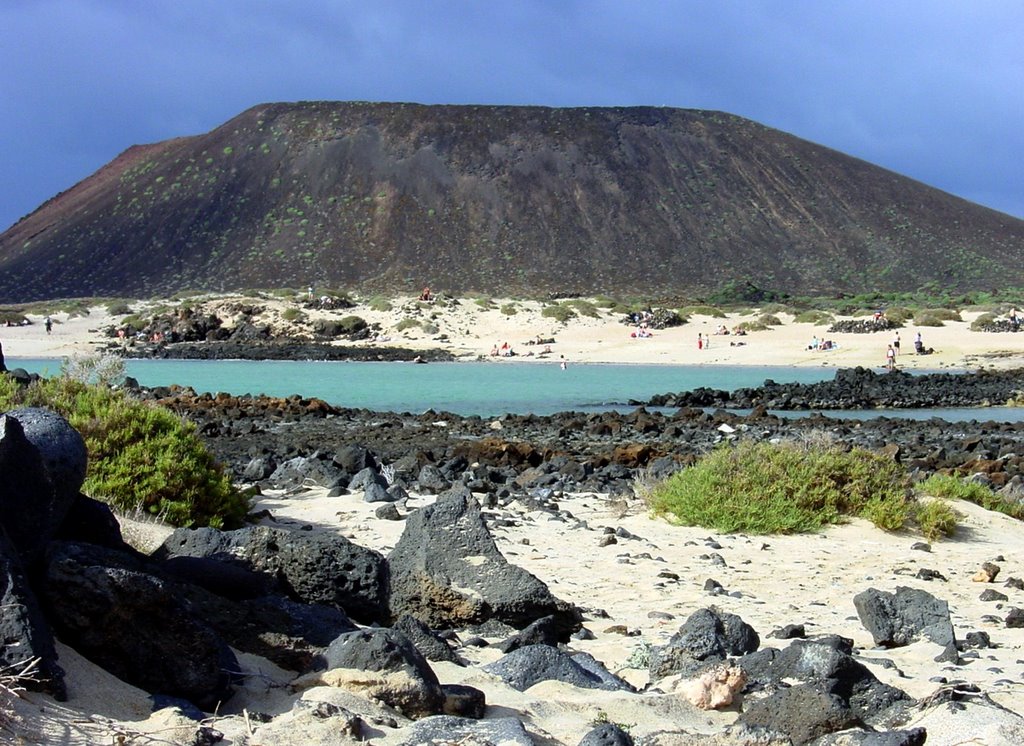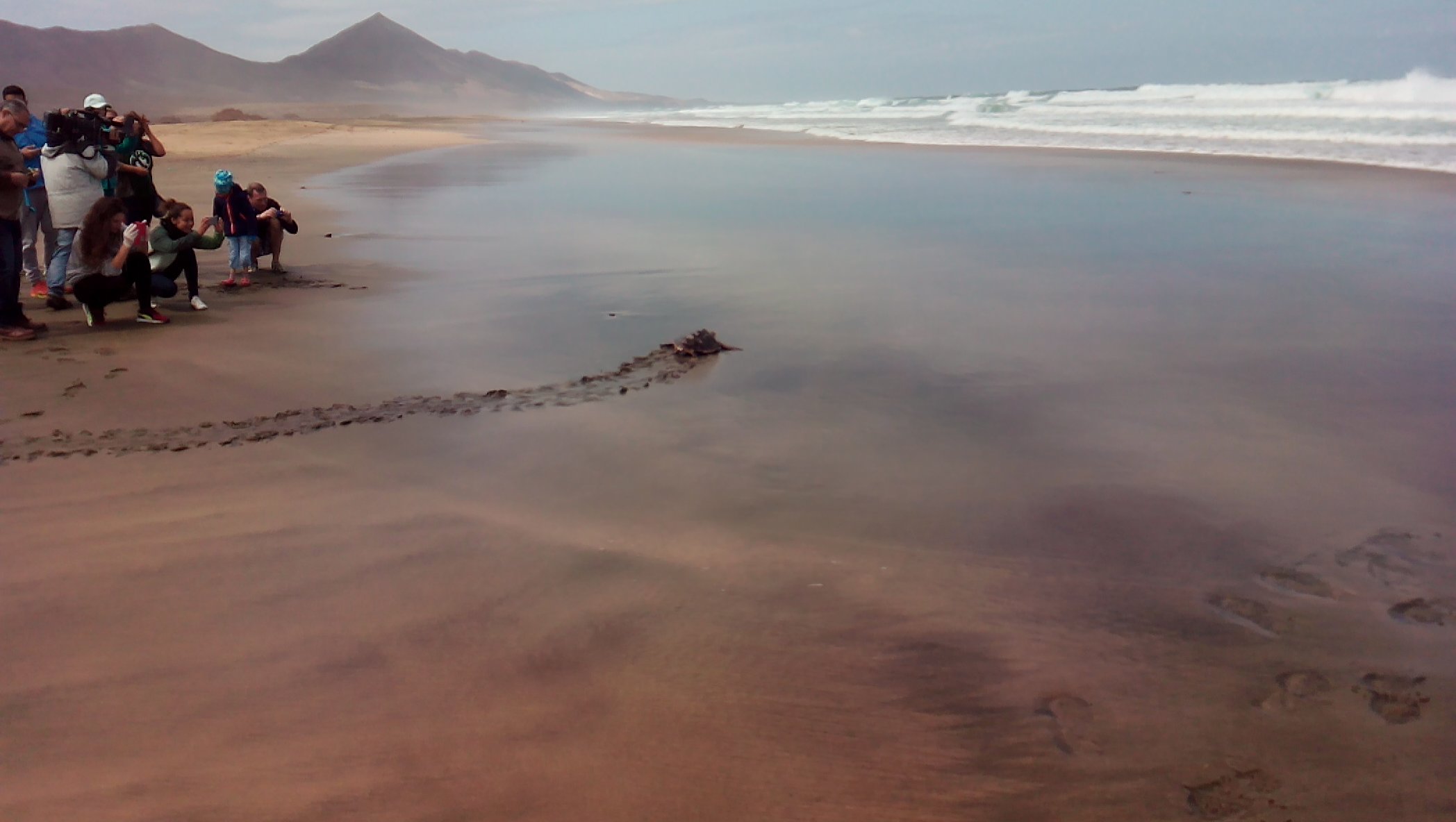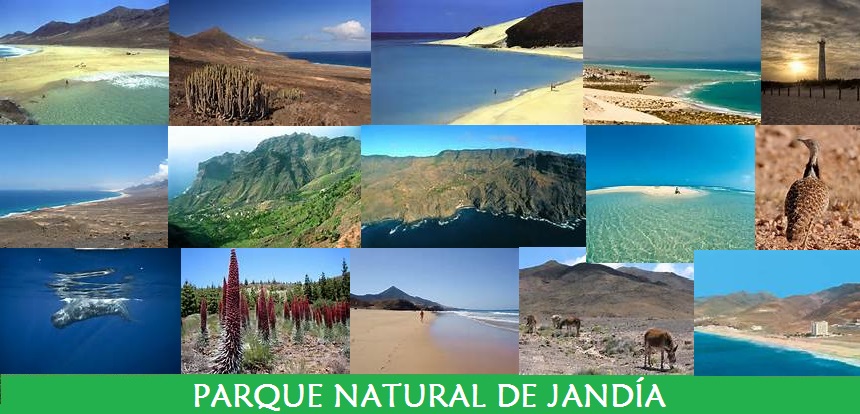Fuerteventura was declared a Biosphere Reserve by UNESCO in 2009 and not without reason. Here we have one of the largest representations of desert and semi-desert habitats in all of Europe. Despite its great aridity, Fuerteventura has a huge amount of biodiversity with unique species as well as an incalculable wealth of marine life with over 100km of practically virgin coastline.
With almost no light contamination, it is the perfect place for stargazing and was declared a Starlight Reserve (an area where the lighting conditions and clarity of the night sky remain intact). Fuerteventura contains up to 50 paleontological sites of world interest and is a unique place for observing volcanic areas with interesting geomorphologic structures.
1. Natural monument of Tindaya mountain.
As a result of a process of intrusion of old materials that were revealed by intense erosion, a unique geological formation was created. It has an elevation of 400m with a plain that surrounds it. On clear days, you can see as far as Mount Teide on Tenerife and many of the engravings (over 300) are directed to that point. It´s also worth noting the existence of engravings from the same period in Lanzarote that are directed to the same mountain of Tindaya, suggesting the intense religious and cultural weight that this sacred place had for the ancient inhabitants of the islands.
 2. Natural Park of Ajuy
2. Natural Park of Ajuy
A set of volcanic caves of ancient lava flows that have been carved with the force of the sea. It has a high scientific interest due to the deposits of ancient sediments including fossil remains of marine animals. As they say, a picture paints a thousand words:
3. Protected area of Malpais Grande.
This protected landscape is in the municipalities of Antigua and Tuineje, in the central plain of Fuerteventura. The importance of this area is due to the fact that the last eruptions of the island occurred here and the tubes, cones and volcanic craters are recognized to still be in very good conditions.
4. Natural Park of Las Dunas of Corralejo.
This is probably the biggest attraction of the island and was declared a National Park in 1994. Together with the Isla de Lobos, it is a specially protected area mainly due to the amount of seabird species. With over 2,600 hectares, this is the largest dunes area in the whole of the Canaries. This whole area evokes tranquility and harmony – take a leisurely stroll over its fine golden sand and you will feel the stress of everyday life just melt away.
5. Ntural Park of Isla de Lobos.
6. Natural Park of Jandía. Cofete.
With over 14,000 hectares, which is almost the whole southern part of Fuerteventura, it was declared a Natural Park in 1987. It has a high biological importance due to its unspoilt beauty with very representative endemic state. During your tour around Fuerteventura, Cofete is a “must visit”. Perhaps the drive there is a bit tedious but trust us, it´s well worth it just to see a virtually unchanged vast place where man lives in perfect harmony with nature and its resources. Its beaches are the sole European witnesses to where the leatherback tortoise (and other species) makes its nest. In the surrounding waters it is also possible to find huge cetaceans such as the sperm whale.
7. Cardón mountain.
Protected since 1987, the highlight of this mountain is not its height (only 665m) but its visual impact due to it being in a relatively flat area and the attractive reddish colors of the rocks due to the minerals that form it oxidizing from the effect of water and air. At its peak, in addition to stunning views of Cofete, you can see representative volcanic features and the area from where the eruption actually started. Every year, the village of Cardon celebrate a pilgrimage to the Shrine of Tanguito.
Follow us:



